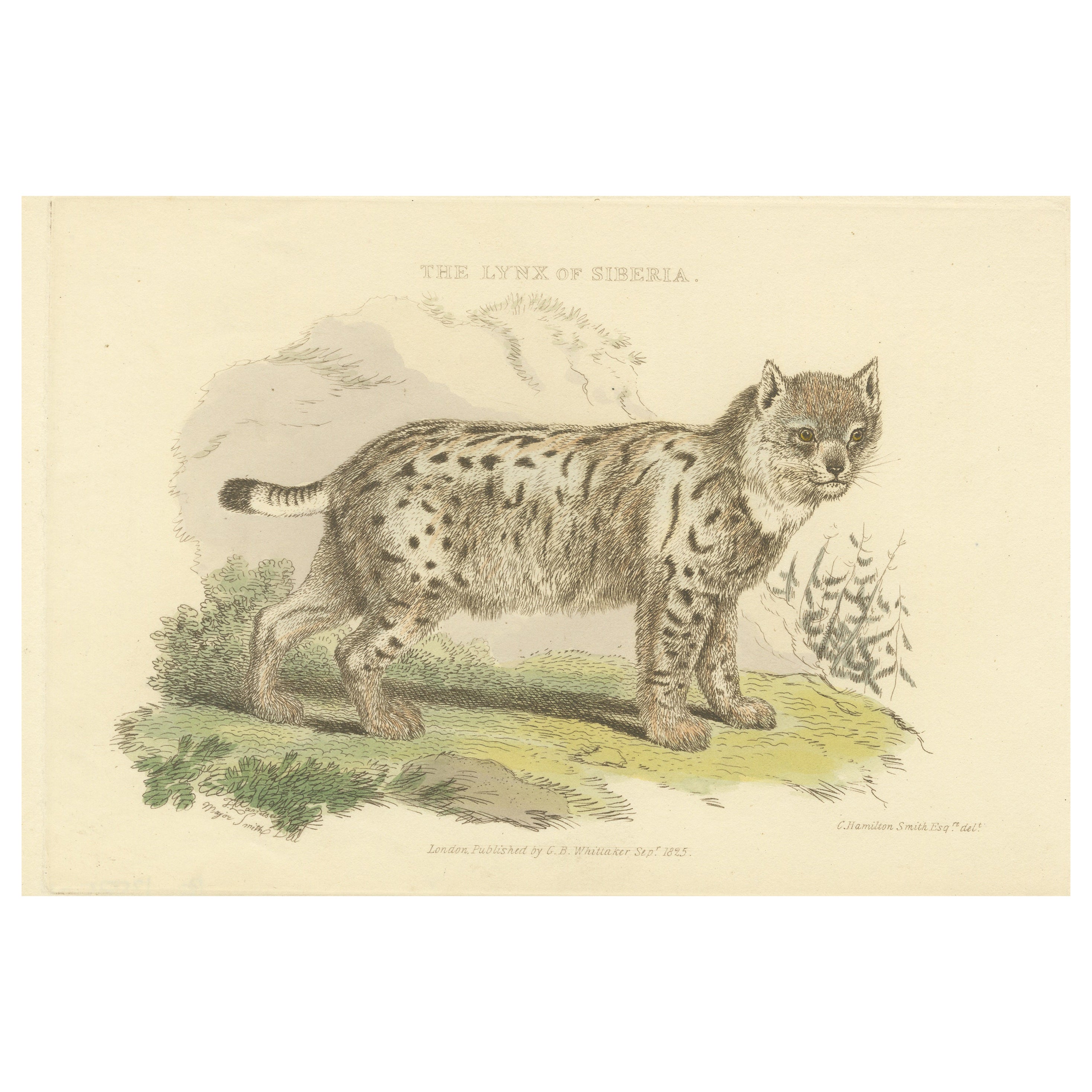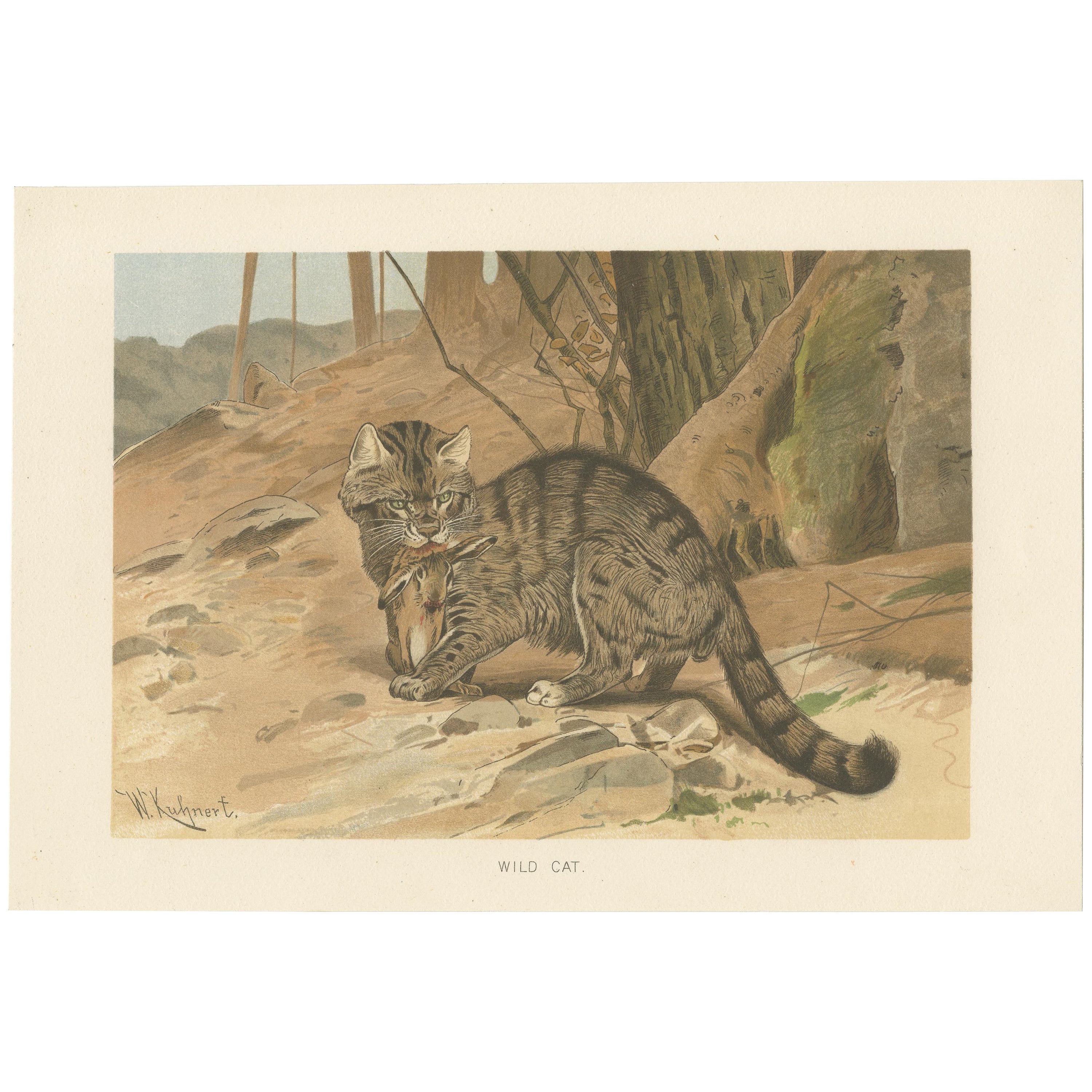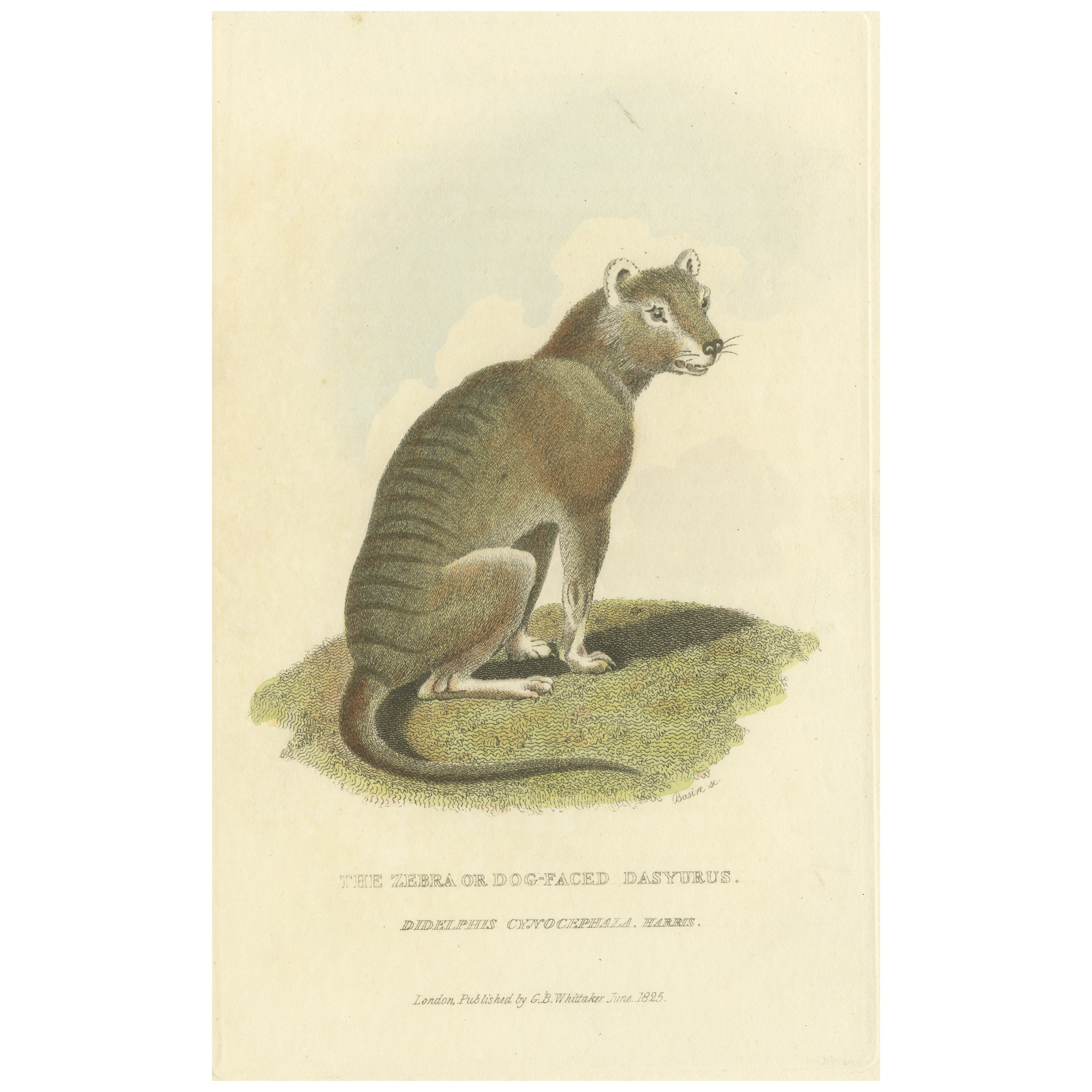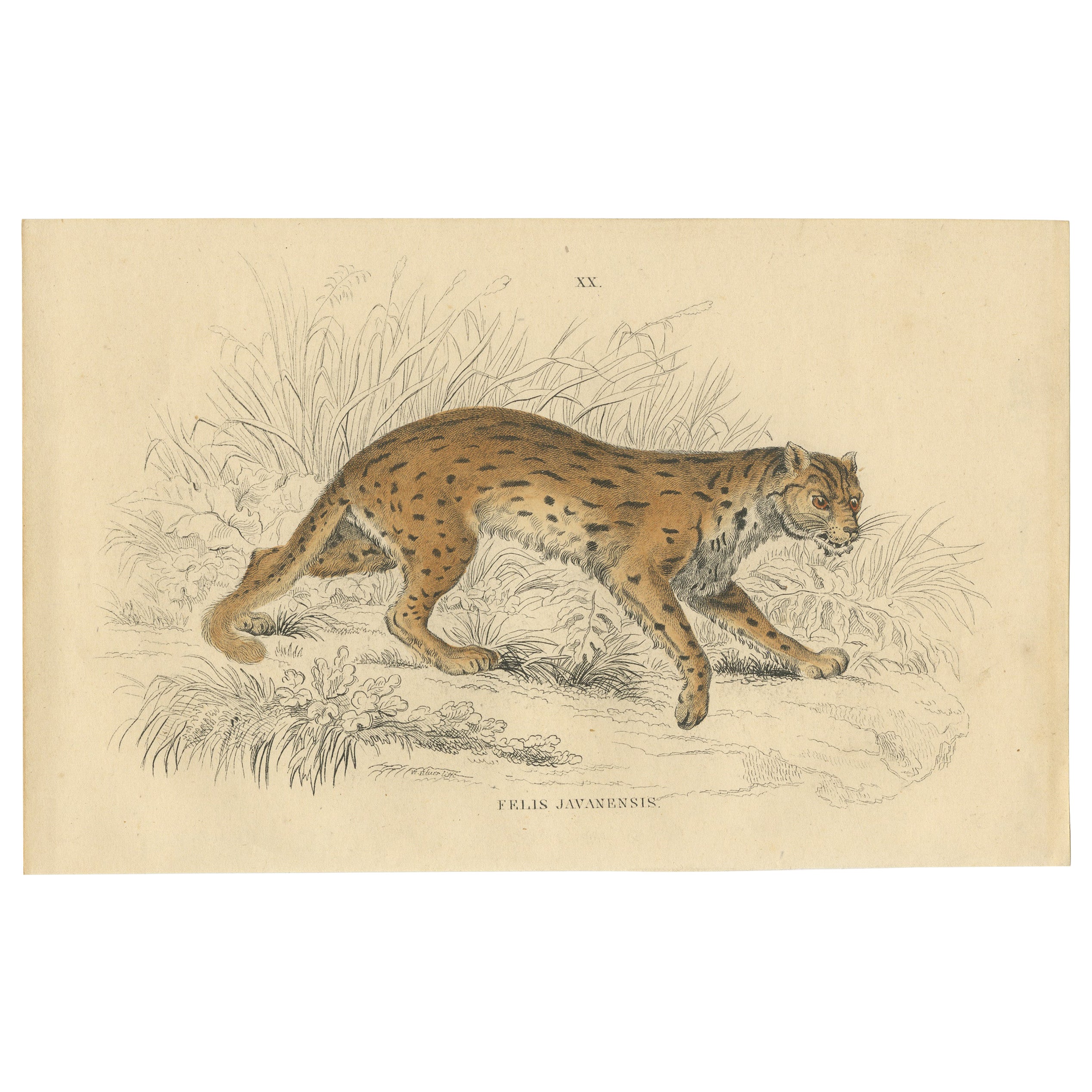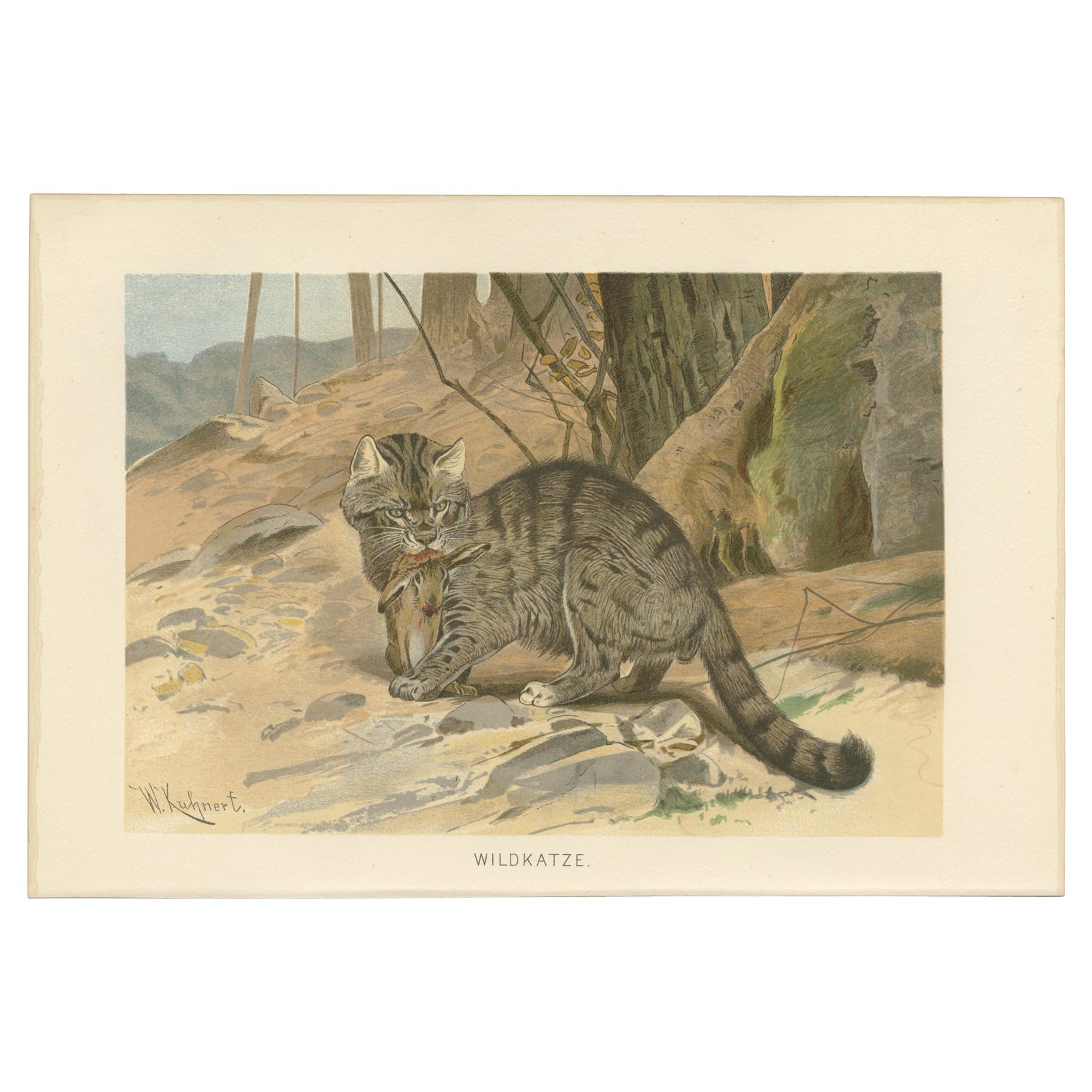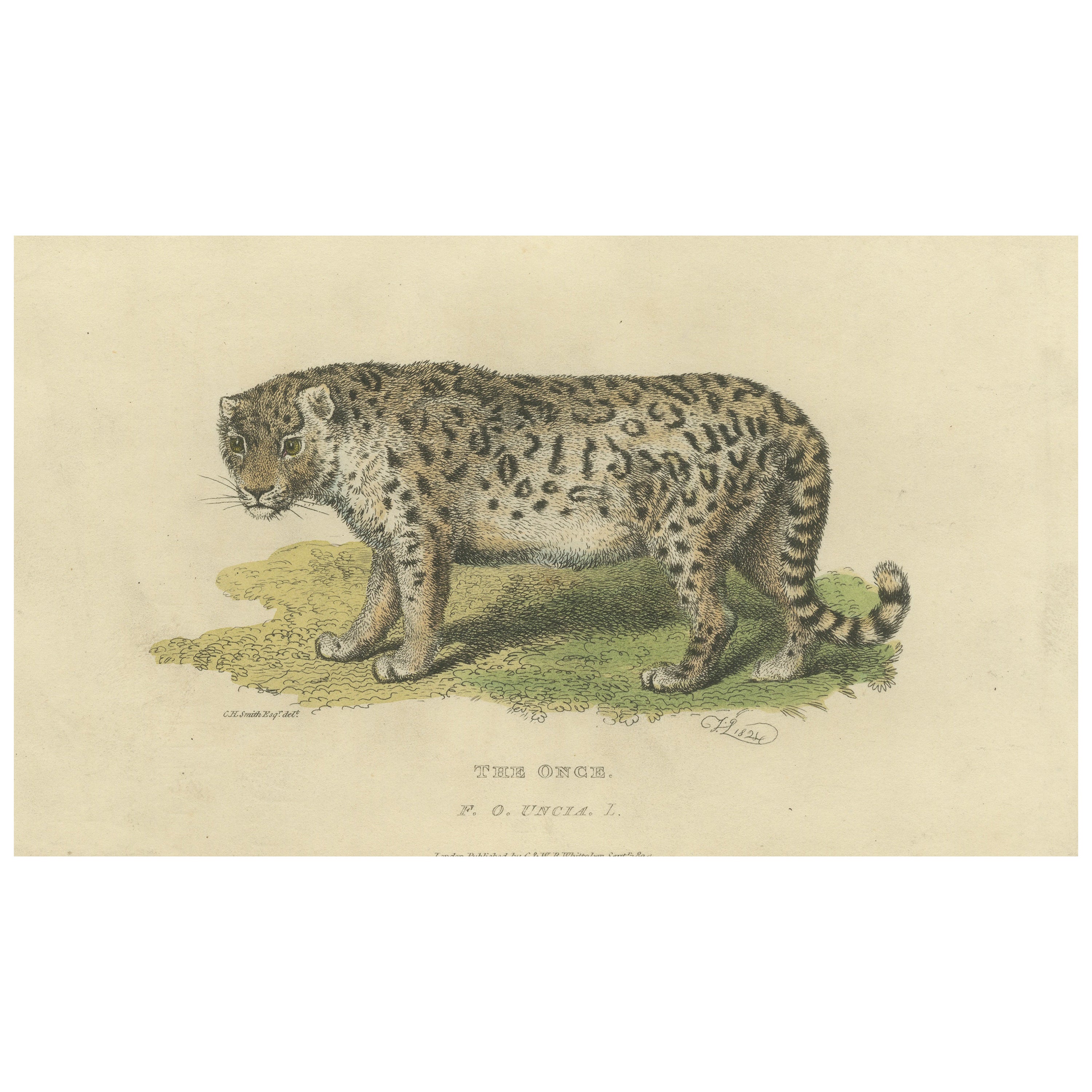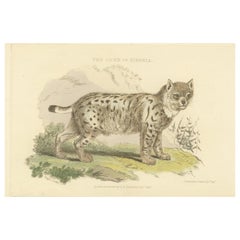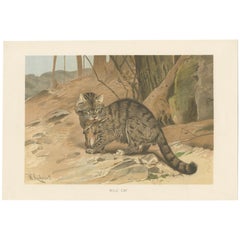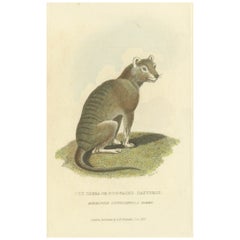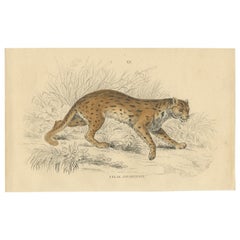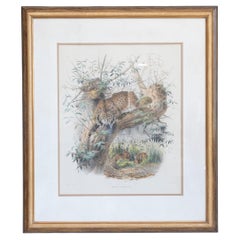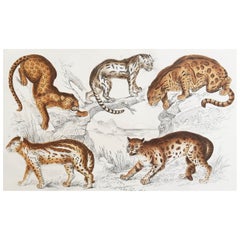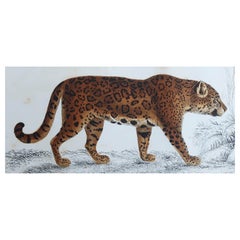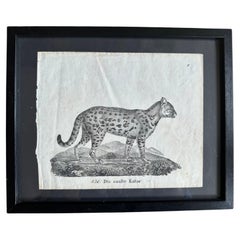Items Similar to Antique Print with Hand Coloring of a Pampas Cat
Want more images or videos?
Request additional images or videos from the seller
1 of 6
Antique Print with Hand Coloring of a Pampas Cat
$249.21
$311.5220% Off
£185.52
£231.9020% Off
€208
€26020% Off
CA$341.36
CA$426.7020% Off
A$379.67
A$474.5820% Off
CHF 198.25
CHF 247.8120% Off
MX$4,620.15
MX$5,775.1920% Off
NOK 2,531.96
NOK 3,164.9520% Off
SEK 2,374.53
SEK 2,968.1720% Off
DKK 1,583.43
DKK 1,979.2920% Off
Shipping
Retrieving quote...The 1stDibs Promise:
Authenticity Guarantee,
Money-Back Guarantee,
24-Hour Cancellation
About the Item
The image is an original antique print titled 'The Colocolo, F. Colocolo of Molina', an original work with hand coloring depicting a Pampas cat. The scientific name provided, F. Colocolo, refers to the colloquial name "Colocolo," derived from the work of Juan Ignacio Molina, an 18th-century Chilean priest and naturalist who was one of the first to describe the South American flora and fauna scientifically. Today, the Pampas cat is known by the scientific name Leopardus colocola.
This print was published by G.B. Whittaker from an illustration by Charles Hamilton Smith around 1824, and it was part of the early 19th-century endeavor to document and share knowledge of the world's wildlife. Charles Hamilton Smith was an esteemed illustrator and naturalist whose detailed artworks provided Europeans with their first glimpses of exotic animals from distant lands.
G.B. Whittaker was a publisher based in London known for producing a range of texts, including natural history publications that featured such illustrations, helping to disseminate knowledge during an era of burgeoning interest in the natural sciences.
The Pampas cat itself is a small wild cat species native to South America. Its habitat ranges from the Pampas lowlands in Argentina to the Andean highlands. It has a variety of fur patterns and colors, depending on the region, from reddish or grayish with dark spots to nearly uniform in color. This adaptability in appearance reflects the cat's ability to inhabit a range of environments, from arid zones to grasslands and even marshy landscapes.
The print is not only a representation of the animal but also an artifact of the scientific and artistic collaboration that was prevalent in the 19th century, capturing the fascination with the natural world that characterized the age of exploration and discovery. The Pampas cat, like many wild cats, is elusive and not well known to the general public, making historical illustrations such as this one valuable for bringing attention to the species and its conservation.
- Dimensions:Height: 9.57 in (24.3 cm)Width: 5.79 in (14.7 cm)Depth: 0.02 in (0.5 mm)
- Materials and Techniques:
- Period:
- Date of Manufacture:c.1824
- Condition:General age-related toning. Minor wear and soiling. Blank verso. Please study image carefully.
- Seller Location:Langweer, NL
- Reference Number:Seller: BG-13585-151stDibs: LU3054338931932
About the Seller
5.0
Recognized Seller
These prestigious sellers are industry leaders and represent the highest echelon for item quality and design.
Platinum Seller
Premium sellers with a 4.7+ rating and 24-hour response times
Established in 2009
1stDibs seller since 2017
2,510 sales on 1stDibs
Typical response time: <1 hour
- ShippingRetrieving quote...Shipping from: Langweer, Netherlands
- Return Policy
Authenticity Guarantee
In the unlikely event there’s an issue with an item’s authenticity, contact us within 1 year for a full refund. DetailsMoney-Back Guarantee
If your item is not as described, is damaged in transit, or does not arrive, contact us within 7 days for a full refund. Details24-Hour Cancellation
You have a 24-hour grace period in which to reconsider your purchase, with no questions asked.Vetted Professional Sellers
Our world-class sellers must adhere to strict standards for service and quality, maintaining the integrity of our listings.Price-Match Guarantee
If you find that a seller listed the same item for a lower price elsewhere, we’ll match it.Trusted Global Delivery
Our best-in-class carrier network provides specialized shipping options worldwide, including custom delivery.More From This Seller
View AllAntique Print with Hand Coloring of a Siberian Lynx
Located in Langweer, NL
An original hand-coloured antique print featuring a Siberian lynx, which is a subspecies of the Eurasian lynx. This print, titled 'The Lynx of Siberia', would have been part of a work published by G.B. Whittaker and based on an illustration by Charles Hamilton Smith, around 1825.
Charles Hamilton Smith was a versatile figure of his time, not just an illustrator and naturalist, but also a scholar with a keen interest in various subjects including ethnology and military science. His depictions of animals were among the early scientific efforts to document wildlife in their natural habitats with an emphasis on both detail and aesthetics.
The publisher G.B. Whittaker was known for producing works of natural history, and his collaboration with Charles Hamilton Smith resulted in a number of beautifully illustrated prints that were not only scientifically valuable but also works of art.
The Siberian lynx, or Lynx lynx...
Category
Antique Mid-19th Century Prints
Materials
Paper
Antique Print of a Wild Cat by Lydekker '1894'
Located in Langweer, NL
Antique print titled 'Wild Cat'. Lithograph of a wild cat with a freshing killed rabbit. This print originates from 'The Royal Natural History' by Richard Lydekker...
Category
Antique Late 19th Century Prints
Materials
Paper
$95 Sale Price
20% Off
Antique Print with Hand Coloring of a Tasmanian Tiger or Tasmanian Wolf
Located in Langweer, NL
The uploaded image, labeled as 'The Zebra or Dog-Faced Dasyurus', depicts a thylacine, which was also known as the Tasmanian tiger or Tasmanian wolf. This is an interesting historica...
Category
Antique Mid-19th Century Prints
Materials
Paper
$412 Sale Price
20% Off
Free Shipping
Hand-Colored Print of the Javan Leopard from Jardine's Natural History, 1860
Located in Langweer, NL
A hand-colored illustration from Jardine's Natural History, published around 1860. It depicts the species *Felis Javanensis*, commonly known as the Javan leopard. The illustration is...
Category
Antique 1860s Prints
Materials
Paper
$91 Sale Price
20% Off
Antique Print of a Wildcat by Brehm 'c.1890'
Located in Langweer, NL
Antique print titled 'Wildkatze'. Original antique print of a wildcat. This print originates from 'Brehms Tierleben : allgemeine Kunde des Tierreichs'...
Category
Antique Late 19th Century Prints
Materials
Paper
$95 Sale Price
20% Off
A Hand-Colored Illustration of the Snow Leopard or Once, 1824
Located in Langweer, NL
This engraving is a detailed depiction of a snow leopard, also known as an ounce (Panthera uncia). It shows the animal in a profile view, allowing for a clear observation of its phys...
Category
Antique Mid-19th Century Prints
Materials
Paper
$277 Sale Price
20% Off
You May Also Like
English Victorian 19th Century Hand-Colored Framed Lithograph of a Felis Pardina
Located in Atlanta, GA
An English hand-colored lithograph of a Felis Pardina lynx by J.Smit after Joseph Wolf, printed by M & N Hanhart and set in a wooden frame. Created in England during the reign of Que...
Category
Antique 19th Century English Victorian Prints
Materials
Glass, Wood, Paper
Original Antique Print of Cats, 1847 'Unframed'
Located in St Annes, Lancashire
Great image of cats.
Unframed. It gives you the option of perhaps making a set up using your own choice of frames.
Lithograph after Cpt. brown with original hand color.
Published,...
Category
Antique 1840s English Folk Art Prints
Materials
Paper
Original Antique Print of a Jaguar, 1847 'Unframed'
Located in St Annes, Lancashire
Great image of a jaguar.
Unframed. It gives you the option of perhaps making a set up using your own choice of frames.
Lithograph after Cpt. brown with original hand color.
Publis...
Category
Antique 1840s English Folk Art Prints
Materials
Paper
Zoological Original Lithograph Featuring "the gentle cat" from 1831-35
Located in Hamburg, DE
Transport yourself to the Biedermeier era with this exquisite and rare original lithograph from the book "Neue Bildergalerie der Jugend." Published between 1831 and 1835 by Carl Hell...
Category
Antique 1830s German Biedermeier Prints
Materials
Paper
Italian Contemporary Hand Colored Faunistic Print Representing Tiger and Jaguar
Located in Scandicci, Florence
Print from a Collection of three faunistic prints:
- Tiger an Jaguar
- Elephant
- Giraffe
Printed manually on 100% cotton engraving paper in Florence Italy.
Each print is entir...
Category
21st Century and Contemporary Italian Decorative Art
Materials
Paper
"Texan Lynx": An Original Audubon 19th Century Hand-Colored Quadruped Lithograph
By John James Audubon
Located in Alamo, CA
This is an original 19th century John James Audubon hand-colored lithograph entitled "Texan Lynx", No. 19, Plate XCII, 92, from Audubon's "Quadrupeds of North America", printed and colored by J.T. Bowen and published in Philadelphia from 1849-1854. The lithograph depicts a Texan Lynx laying on the ground with hills in the background.
This antique hand colored Audubon quadruped lithograph is presented with the original descriptive text pages 293-296 from Audubon's 19th century publication. The print is in excellent condition, including the striking hand coloring.
John James Audubon (1785-1851) was a naturalist and artist. He was initially unsuccessful financially prior to the publication of his famous work “The Birds of America”, spending time in debtor’s prison, once stabbing a disgruntled investor in self-defense. However, his obsession with birds and art motivated him to persist in his goal of documenting every bird in America via his watercolor paintings and publishing his works for all to enjoy. Audubon's first illustrations were published in a large elephant folio size. Due to their expense they were purchased in rather small numbers by the wealthy. To reach a larger audience, Audubon, with the help of his sons and J. T. Bowen, published a smaller octavo sized lithograph version, which were much more affordable.
With the success of his bird projects, Audubon then turned his attention to four-legged animals. He explored the Missouri River in 1843 sketching the four-legged animals he encountered in their natural setting. His expedition covered some of the same regions recently explored by Lewis and Clark, traveling from present day Alaska to Mexico. Audubon realized that this was an opportunity to document these animals in the still relatively pristine American wilderness, before man encroached on their environment.
Between 1845 and 1848, Audubon and his sons John Woodhouse Audubon and Victor Gifford Audubon produced a set of elephant folio sized lithographs that were primarily engraved and hand colored by J. T. Bowen in Philadelphia. The publication, which included text descriptions of the animals was published 3 years before Audubon died. As with the birds, this was followed by a three-volume set of 155 octavo-sized plates entitled “The Quadrupeds of North America” completed and published by Audubon’s sons, John, Jr. and Victor.
Audubon prints continue to be popular and a wise investment. The double elephant folio set...
Category
Mid-19th Century Naturalistic Animal Prints
Materials
Lithograph
More Ways To Browse
Antique Pineapple Bedroom Furniture
Antique Pineapple Tables
Antique Punjab
Antique Quimper Plates
Antique Spanish Commode
Antique Steam Iron
Antique Tobacco Baskets
Antique Union Jack
Arita Kakiemon
Art Deco Polar Bear
Art Deco Squirrel
Art Deco Tv Cabinet
Barbini Fish
Barley Twist Lion
Bas Relief Urn
Bathroom Cabinet Marble Top
Biedermeier Piano
Black Desk Cane
